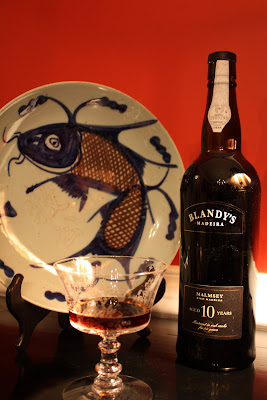
It has been very cold in North Carolina. It's been between 18F and 35F since Thanksgiving and us warm blooded folks are not used to it. It is meant to get this cold for a couple of weeks in February! Not so soon! As a consequence, we have all been inflicted with one form of respiratory illness or another, and this past Sunday required a heart-warming chicken stew of some sort. Moroccan Chicken Tajine was my answer.
"Chicken Tajine
Ingredients:
2 tablespoons extra-virgin olive oil, 2 turns of the pan
4 cloves garlic, smashed beneath the flat of your knife with the heel of your hand, discard skins
1 1/2 to 1 3/4 pounds boneless, skinless chicken breasts, cut into large bite-size pieces
1 1/2 teaspoons grill seasoning blend (recommended: Montreal Seasoning by McCormick) or coarse salt and coarse pepper
2 medium or 1 large yellow skinned onion, quartered and sliced
10 pitted prunes, coarsely chopped
1-ounce box or 1/4 cup golden raisins
2 cups good quality, low sodium chicken stock, available in paper containers on soup aisle
Spice blend:
1 1/2 teaspoons ground cumin
1 1/2 teaspoons sweet paprika, eyeball it
1/2 teaspoon ground coriander, eyeball it
1/2 teaspoon tumeric, eyeball it
1/8 teaspoon cinnamon, a couple pinches
Couscous:
1 1/2 cups chicken stock
1 1/2 cups couscous
2 tablespoons extra-virgin olive oil, eyeball it
2 scallions, finely chopped
Condiments:
Chopped cilantro leaves or flat-leaf parsley
Finely chopped scallions
Mango chutney, any variety and brand -- available on the condiment or International food aisles
Directions:
Heat a large nonstick skillet over medium high heat. Add extra-virgin olive oil, 2 turns of the pan, in a slow stream, and add smashed garlic. Season the chicken with seasoning blend. Scatter chicken around the pan in an even layer. Cook chicken pieces 2 minutes on each side to brown, then add the onions, prunes, raisins and stock. Mix spices in a small dish and scatter over the pot. Cover and reduce to moderate heat. Cook 7 or 8 minutes, remove the lid and stir.
To prepare the couscous, bring chicken stock to a boil. Add couscous, extra-virgin olive oil and scallions and remove the couscous from the stove immediately. Cover and let stand 5 minutes. Fluff the couscous with a fork.
Uncover chicken and cook another 2 to 3 minutes to thicken slightly. Adjust the seasoning, to taste, and serve chicken on a bed of couscous. Garnish with chopped cilantro and scallions. Serve with chutney."
Here are the comments from my family:
5-year old Chocolate: This looks gross but it tastes very good! This is the best lunch ever!
8-year old Vanilla: This is the best lunch YOU ever made! (I nodded and smiled knowingly, not wanting to press the issue. He read my recent post on Dorothy and is still reeling from the fact that I wrote that she was not a very good cook).
Prince Charming: Oh my god! This is amazing! Cinnamon, how did you do it? This really is fantastic!
I think I should get over that scratchy voice and watch more Rachel Ray shows on the FoodNetwork. Right?
Best,
Cinnamon








